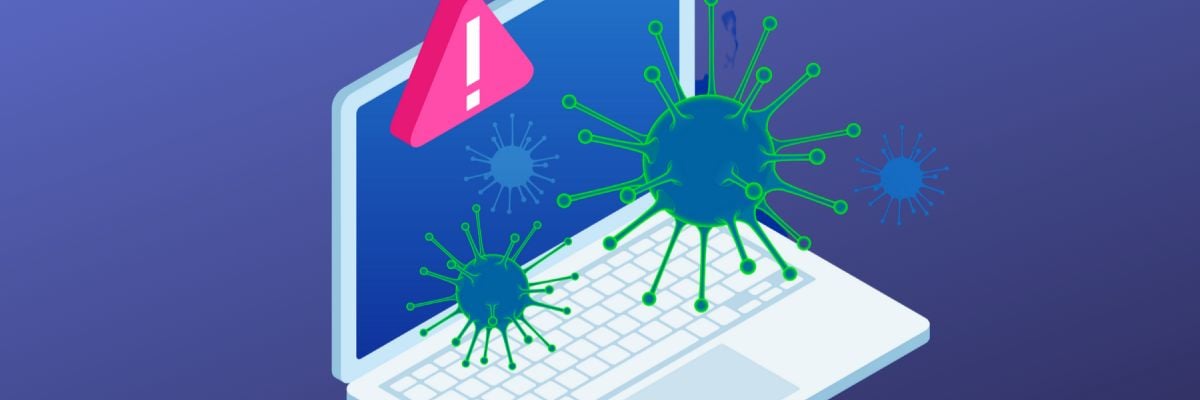By: Darrian Breedlove, Content Writer on June 16th, 2023
Common Cyber Threats to Look Out For
Cybersecurity has been a significant obstacle for businesses since computers were first introduced as a helpful tool. Unfortunately, there’s no end in sight for cyber attacks. They are expected to grow at an exceptional rate. According to Cybersecurity Ventures, cybercrime will hit $8 trillion in 2023 and grow to $10.5 trillion by 2025.
However, your business can defend itself against these attacks on your vulnerable infrastructure and data in numerous ways. Usherwood Office Technology harbors many cybersecurity and IT services to help protect you against cyber threats. Still, the first step to protecting your business is being aware of what threats are out there. Today, we’ll break down the most common threats to your business’s cybersecurity.
Top Ten Threats to Your Business’ Cybersecurity
The types of cybersecurity threats out there are endless. There are a multitude of ways cyber criminals can gain access to hack infrastructures and weasel their way into users’ sensitive data. For your business to get accustomed to what’s out there and how you can work to avoid these attacks before they happen, here are the top ten cyber threats you may encounter that can put your business at risk.
1. Lack of the Safety Essentials
If your business is not taking precautions by maintaining good “cyber hygiene,” this is immediately a considerable risk. Arming your business with the safety essentials of cybersecurity, such as VPNs, multi-factor authentications (MFA), and firewalls, is an excellent place to start protecting your network and vulnerable information. They provide limited access to your private domains by enforcing strong passwords, hiding your network from unrecognized lurkers on local WiFi, and creating a net to allow only authorized users to pass while stopping unwanted traffic.
These tools ensure unwanted users don’t trespass into your domain or bring in unwanted access to your network. For further detail on how these tools protect your network, refer to our “MFA Scams are on the Rise as Cyber Threats” and “Are VPNs Safe for Your Business?” articles.
2. Targeted Cyber Attacks
Some types of cyber attacks can be targeted mainly at your business and result in unwanted access to your company’s most sensitive information. These attacks typically appear in the form of phishing emails and MFA scams. These scams are set to target the unaware by impersonating or mimicking a trusted domain to gain private information. If these malicious impersonators can succeed in tricking a user, with just the click of a button, they can slip into your network and be gone without a trace. “Did You Know Phishing Simulations Help Prevent Cyber Threats?” provides more insight into what to look for in identifying these scams.
3. Third-Party Exposure
If your business shares sensitive information and vulnerabilities with a third-party company, your info could be at stake if that third party is compromised. Some third parties may have less protected networks, creating an easy target for malicious attacks. Any third-party company with privileged access to your infrastructures and sensitive information is a risk to your cyber safety; if a hacker gets into that third-party’s network, they will most likely have access to yours too.
4. Insider Threats
When you think of a cyber threat, you’re most likely thinking of a faceless hacker on the other side of the country or maybe within a different country across the world. However, 60% of data breaches are caused by insider threats. Insider threats are considered current employees, former employees, contractors, partners, or associates potentially threatening your cybersecurity. A breach or compromise can occur within your business, either by mistake or intentionally. It’s crucial to ensure your work environment is regularly monitored and that authorized user access is selective. Our “What Are Insider Threats and How Do You Combat Them?” article covers what to look out for with insider threats and valuable tips for avoiding them.
5. Ransomware
Ransomware is an expensive issue to have. It’s malicious software designed to block your computer system access unless a large sum of money is paid to remove it. Not only do companies lose thousands of dollars to regain access back to their systems, but they also lose revenue due to the time they were down and the time it takes to recover. The other issue is hackers holding access to your system and information. Ensuring you have anti-ransomware, security software, and data backups and avoiding clicking suspicious links or downloads are essential to preventing these destructive attacks.
6. Poor Data Management
Another aspect of maintaining good “cyber hygiene” is having an organized and tidy data management system. Ensuring your business is on top of properly storing and organizing your data is a good way of avoiding possible data mistakes or overflows. Overflows can cause confusion, leading to data leakage if specific data is sent or stored incorrectly.
7. Cloud Vulnerabilities
Cloud security breaches are an increasing occurrence for businesses. While the Cloud is meant to be a secure method for business data storage, more online usage and dependence increase attack possibility. Weak and reused passwords, data breaches, and a slip from an inside user could result in a hole in your Cloud’s server security and allow threat access to all within your Cloud. While the Cloud can benefit your business significantly regarding remote usage and hands-off management, this distant relationship could create weaker security.
8. Mobile Device Compromises
Getting most people off their phones is difficult, but when you integrate business into personal devices and see increased users utilizing their cells, targeted mobile attacks will also increase. Suppose an employee of your company happens to download an insecure or malicious mobile application. In that case, all access to their work information and accounts they have saved on their phones are now in the hands of malicious actors. Ensuring your employees and their private devices have applications and methods of keeping corporate data protected will assist with reducing the risk of mobile attacks.
9. Configuration Flukes
Configuration mistakes with your cybersecurity systems can lead to flukes in vital installations and updates. This can cause weakened security and faulty configurations if your cybersecurity isn’t managed or checked on properly. It’s easy for mistakes to happen–whether it be an employee lacking in work performance, an IT expert failing to understand how a cybersecurity tool they’ve installed works, or periodic internal testing and maintenance at fault, you need to ensure all the proper procedures are taken to produce fruitful and secure results to your cybersecurity tools and systems.
10. Patching Failures
If you fall victim to a cyber attack, there’s no need to dwell too long on what you should’ve or could’ve done. The essential aspect of experiencing an attack is returning stronger than before. Ensuring you fix what led to your cybersecurity downfall is the next crucial step in preventing further damage to your cybersecurity. Your business needs to dive into patching, a method of organizing how you will fix the weakness in your cyber defenses and how you will prepare for future attacks.
You need to ask yourself, what happens now? Am I going to experience another attack? How am I protecting myself? How will I prepare for the future? By preparing for attacks with a proactive approach instead of a reactive approach, you can help strengthen your business and minimize the risks of future threats.
Importance of Proper Education & Awareness
Human error can open your network to vulnerabilities. There are a lot of people who need to be made aware of how to adequately protect themselves and their businesses. This can become a business’s most significant risk if left untouched. With the proper education and training, you can strengthen your cybersecurity by including your employees and providing them with all the details on what to watch out for.
Since most cyber threats are caused by internal factors, ensuring your employees are adequately educated and aware of how to avoid them is a crucial step in cybersecurity. Your defenses are only as strong as you make them. So initiating change in your organization is the deciding factor for your business’s present and future safety.
Usherwood’s Incentive to Defend Your Business
Usherwood offers its clients cybersecurity through cybersecurity training, endpoint detection and response, vulnerability management, DNS filtering, mandatory MFA, and regular IT auditing. We also provide free dark-web monitoring to help make your business aware of what information of yours may be out there in the wrong hands.
Usherwood aims to educate our clients and let them know they’re not alone. It’s challenging to manage and deter all the cyber threats threatening to compromise your data, but having an MSP provider like Usherwood on your side helps lighten the burden and create a safer and evolving line of cybersecurity for your business. Take the extra step and contact Usherwood today to see how you can keep your business’s cybersecurity secure.
Read On

MFA Scams are on the Rise as Cyber Threats
Multi-factor authentication (MFA) is one of the best security measures for your business’ network....

What Are Insider Threats and How Do You Combat Them?
When it comes to cyberattacks, insider threats are commonly overlooked. Hazards are not only caused...

Steps to Practice Online Safety and Cybersecurity
As the world continues to shift towards a more digital platform, online safety and cybersecurity...




